By Allyn Vannoy
The 44th Infantry Division, part of the U.S. Seventh Army’s XV Corps, was pushing elements of the battered German 25th Panzergrenadier Division back toward the German frontier in the Vosges Mountains during early December 1944. In a desperate effort to slow the Americans, the Germans were employing defensive tactics that included minefields, roadblocks, and blown bridges. At one French village the Germans tried another means to delay the Americans.
After securing the town of Montbronn on December 6, the 44th Division’s 114th Infantry Regiment found itself attempting to maneuver along the only road in its sector leading north. Its objective was the village of Enchenberg. In an effort to add leverage to the operation, while the 114th Regiment’s 1st Battalion approached the village along the road from Montbronn the 2nd Battalion was directed to move cross-country and flank the village from the northwest.
The 114th Infantry Regiment was a New Jersey National Guard unit with its roots extending from the American Revolution through the Civil War, Spanish-American War, and World War I. The unit had been activated on September 16, 1940, under Colonel H. Norman Schwarzkopf Sr. (the father of General H. Norman Schwarzkopf Jr., commander of Desert Storm forces during the Gulf War of 1991). On September 15, the regiment disembarked at Cherbourg, France. On October 18, it was involved in its first combat operation, and in mid-November, as part of the U.S. Seventh Army, it helped capture the Saverne Gap in the Vosges Mountains.
A village of 80 or 90 buildings, Enchenberg was situated on a high ridge in a gap between two hills, just west of the town of Lemberg. Forests screened the village to the northwest and southwest.
On December 7, just 90 minutes before the assault was to begin, Major Edward M. Minion, who had taken command of the 1st Battalion only two days before, called his company commanders together to explain the orders he had received from regiment. The 1st Battalion was to proceed into the town until it contacted the 2nd Battalion approaching from the north. The strength of the German forces in the area was not known, and no reconnaissance had been made.
Company B, commanded by Captain T. Owens, was to make a reconnaissance in force to feel out defenses along the southern edge of the village. Company C, under Captain Melvin G. Biggs, and Company A, led by Captain Harold B. Williams, were to follow at 100-yard intervals to the rear of Company B. Company D, the heavy weapons company under Captain Eugene Bryant, was to be the last in column.
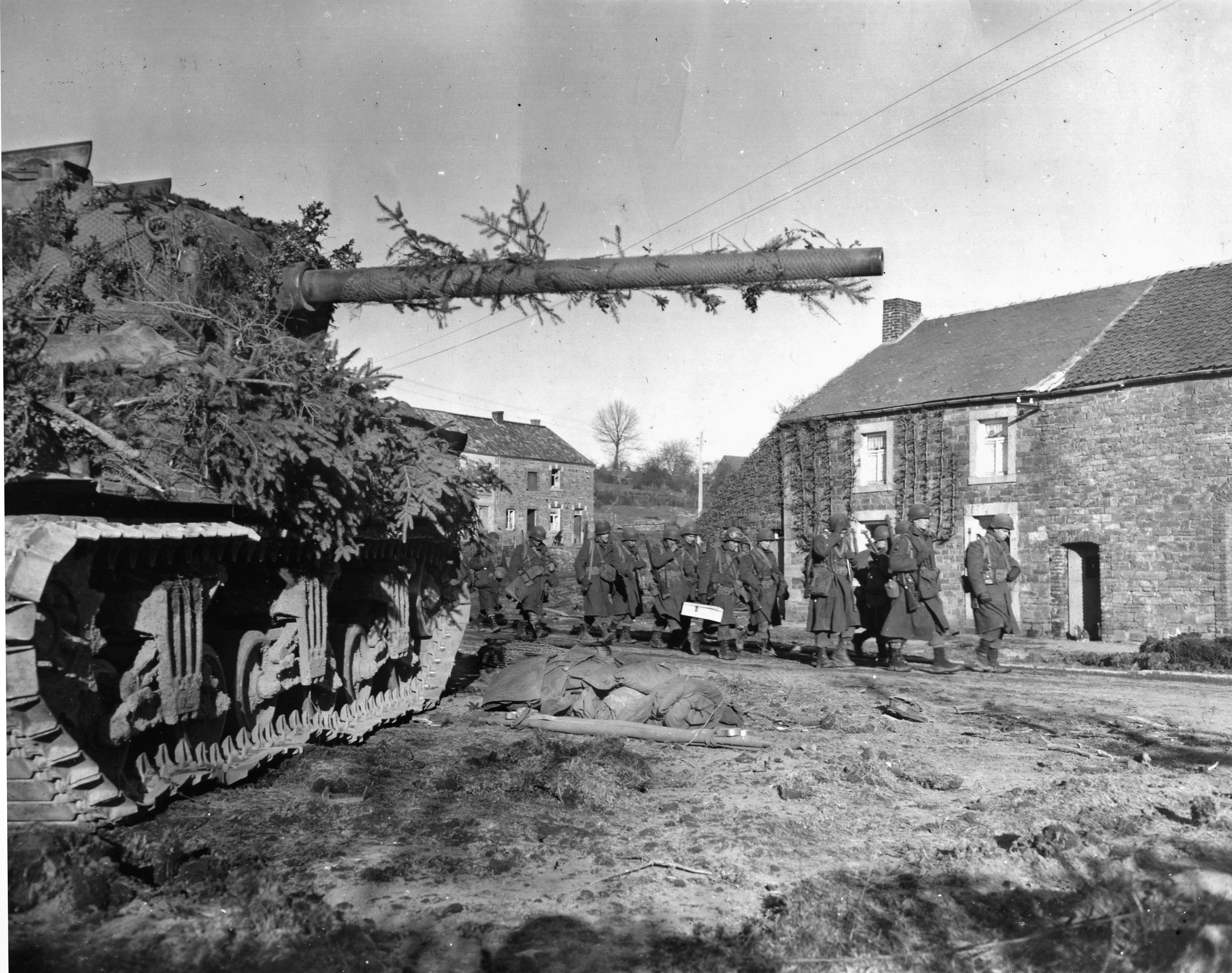
At 7:30 am, the companies pushed off from Montbronn. Company B moved along the dirt road in two columns, 15 yards between men, the 3rd Platoon on the right, 2nd Platoon on the left, and the 1st Platoon on point. The point squad of the 1st Platoon, under Sergeant Frank McMichael, was sent 200 yards ahead of the platoon.
At about 8:30, when the squad was roughly 300 yards from the southern edge of the town, mortar shells began to fall 50 yards ahead. In spite of the fire, Company B continued its advance until it was 100 yards short of the first house, where machine-gun and sniper fire, coming from their immediate front, forced the men into ditches along the road. Word was passed back requesting supporting fire from Company D’s mortars. After two 81mm rounds had been dropped in the area, the machine-gun fire ceased.
When German mortar fire began to fall near Company B at 8:40, Major Minion ordered the mortars to provide smoke. Under the cover of this smoke, the 1st Platoon proceeded to the first two houses on the east side of the road into the town and the first house on the west side of the road.
A terrific explosion was also heard at about this time. It was learned afterward that the road bridge over the railway, referred to by some as the railroad crossing bridge or simply “the bridge,” farther ahead on the road had been blown up by the Germans. Using the first building on the left side of the road for cover, Staff Sergeant Henry Bayer ordered his 2nd Platoon to follow the 1st Platoon into the houses. At this point, a German Panther medium tank, which had maneuvered to a position on the east side of the blown bridge, began to bring 75mm and machine-gun fire on the troops attempting to occupy the houses. At the moment, the loss of the railway overpass bridge was a blessing since it prevented the Panther from moving closer to the GIs.
Lieutenant Bruce A. Tankel, commander of the regiment’s Company C, accompanied by 2nd Lieutenant Dan Uribe and his radio operator, Pfc. James Swinny, approached Company B’s position. Tankel and the others managed to dodge the fire from the Panther and then crawl to the safety of the houses at the edge of the village.
Tankel went to the attic of the second house from the south, on the east side of the road, and established an observation post. Adjusting the fire of the company’s six 105mm howitzers, he brought it to bear in the vicinity of the Panther. Since Tankel could not actually see the tank from his position, he was assisted in directing fire by Technical Sergeant George C. Price, 1st Platoon, who was across the street and could observe the vehicle and call back its position to Tankel, who relayed the information by radio. After a barrage came close to the Panther, it pulled back into the town and out of sight.
At about noon, Tankel spotted German infantry digging in along a forward slope above the railroad tracks to his southeast. Artillery fire was immediately brought down, killing or wounding several of the Germans and forcing the rest to seek cover.
On the battalion’s orders, Company B held in place. Because of the company’s isolated position, and fearing that the Germans might move to encircle it, Minion directed that patrols be sent out from Companies A and C to reconnoiter the area on both sides of Company B’s position. Although they returned with negative reports, to obtain a personal estimate of the situation Minion decided to visit Company B’s position. A wire team followed the major forward. As he reached the company the Panther reappeared.
Company B used several buildings to shield itself from the Panther. To overcome these obstacles, the tank began firing armor-piercing shells into the houses between it and Company B. Not waiting for disaster, Tankel directed artillery fire on the tank once more. After 28 rounds had landed in its vicinity, it again withdrew.
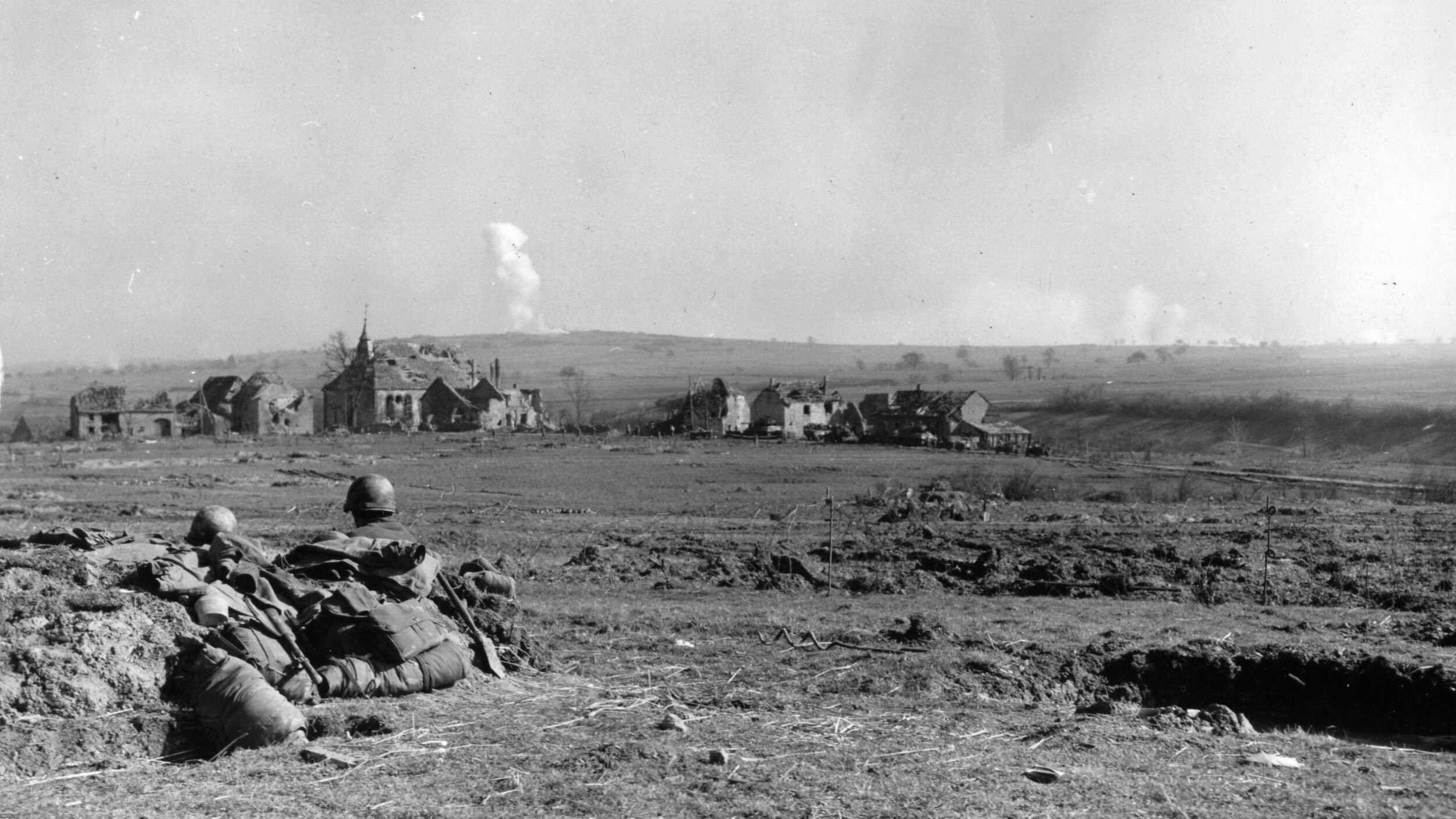
While Company B had been moving into the town, Company C, which had been following 100 yards to the rear, ran into heavy artillery and mortar fire and so was diverted from its intended line of march. It moved into the dense woods to the southwest of Enchenberg. There the GIs dug in and remained for the rest of the day. The same shellfire drove Company A back to buildings just north of Montbronn, where they stayed until 1 pm the next day.
Major Minion decided that Company B, with its 110 men, could hold its position for the moment. He and Tankel then returned to the rear amid heavy rainfall and machine-gun fire. On the way back, Minion hit the ground to avoid some close rounds, and he aggravated an old knee injury. The two men made it to the battalion command post about 5 pm, but the major continued on to the aid station to have his knee checked.
Just after dark, mine detector teams cleared the road up to Company B’s position. Under sniper fire a quarter-ton truck brought forward water, ammunition, and a daisy chain—a series of land mines tied together with a rope—to the company.
A perimeter defense had been set up with the 3rd Platoon protecting to the east and the 2nd Platoon on the west side of the road. The 1st Platoon was set up in houses to the rear of the 3rd and 2nd Platoons. Half the men remained on alert while the other half rested.
About 10 pm, the Panther returned to the same point it had occupied on the previous occasions and opened up with 75mm fire. The GIs being fired on were not able to vacate their house because of continuous small-arms fire that was also sweeping down the main road through the town. Two men were wounded as a result. The Panther kept up with sporadic cannon and machine-gun fire through the night but withdrew before dawn.
The next morning at 7, Pfc. Michael Kness, Company B, decided to relieve himself and started to step out of the building where he had spent the night. Private Donald I. Dyer, who was seeing his first action, was on guard at the time and warned Kness against leaving the building. Kness went outside anyway. Dyer then turned his attention toward the window that faced the road. Although it was still dark, he noticed three soldiers approaching along the road. Two of the men proceeded to go around the side of Dyer’s house while the third remained beside a tree in front of the house.
Dyer called out a challenge to the individual by the tree, giving the password. The individual answered, “Was?” But Dyer wasn’t exactly sure of his words. It was dark, and he had never seen a German uniform before. The man nonchalantly turned and started back toward the center of town along the roadway. Dyer then heard a shot and someone yelled, “They got Kness!” At the same moment five Germans appeared and broke into a run down the road from the rear of the house. Dyer fired two shots at the fleeing group. Dropping the trailing figure, he then fired another four rounds. One of the group turned and fired a short burst at Dyer with a machine pistol. Kness was later found dead at the bottom of the cellar stairs.
As it was getting light, Sergeant Leslie O. Curtwright, leader of 2nd Squad, 3rd Platoon, was on the second floor of one of the buildings. He noticed a German on the railway embankment about 175 yards away, apparently trying to observe for artillery fire direction. Curtwright drew a bead on the German with his rifle while asking his platoon leader, Lieutenant Borgerding, “Can I pull it?” Borgerding replied, “Go ahead.” Curtwright flipped off the safety and squeezed the trigger. The German fell. Even at that range Curtwright could tell that he was dead—the first of six enemy soldiers to be killed by Curtwright that day.
At 7:30, 2nd Lieutenant Larsen, a forward observer from Company C, sighted a “bunch of careless Germans” digging in on ground to the east of the town on Hill 407. “We banged the hell out of Jerry on that hill,” recalled Pfc. Leonard J. Hare. Word was also received that the 2nd Battalion, approaching from the northwest, had run into heavy mortar fire as it attempted to close the circle around Enchenberg.
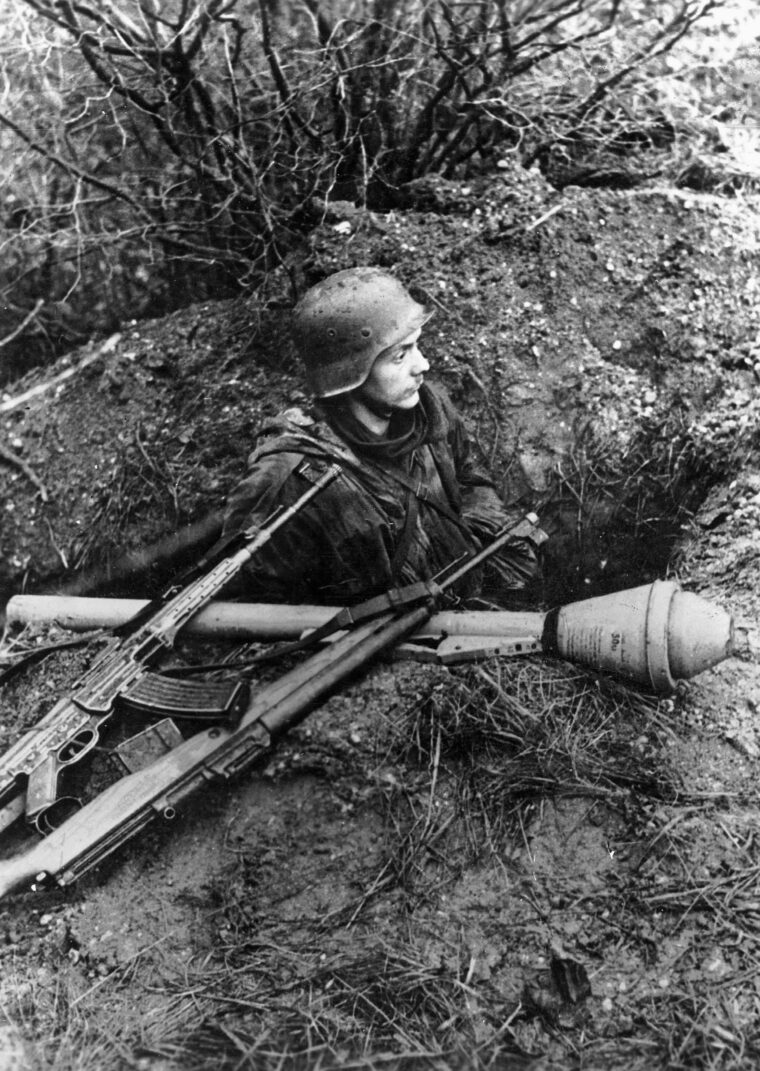
At 8:15, Sergeant Harry D. Loeb sighted the ever-present Panther moving into its usual firing position across the railroad bridge gap. This information was reported to the battalion, but before fire could be directed against the tank it again withdrew.
The regiment now ordered 1st Battalion to continue its attack and secure the southeast end of the village until they could link up with the 2nd Battalion. Major Ralph C. McCrum, acting 1st Battalion commander while Minion was recovering from his knee injury, called a meeting of company commanders and decided on a new plan of action.
Company C was to proceed at 11 am to the edge of the woods west of the houses occupied by Company B, then move northeast, cross the railroad tracks, and clear out the houses on the left side of the main street. Company B was to cross over the railway and clear out the houses to the right of the main street. Company A was to move into the houses vacated by Company B and act as battalion reserve. The planned jump-off was changed to 1 pm because of the problems 2nd Battalion was having north of the town. The situation was deteriorating to a series of shoot-and-scoot actions by the Panther, punctuated by fire and wait on the part of the Americans.
At 11, the tireless Panther reappeared. Loeb spotted it from an upstairs window. As he started downstairs to report this information to the command post across the street, the Panther let loose an armor-piercing round at Loeb’s building, followed quickly by two high-explosive shells. One blast tore Loeb’s right leg off at the hip as shell fragments also wounded Private Mortimer Cohen. After firing the three rounds, the tank again withdrew.
Lieutenant Elwin D. Sterling and Sergeant George C. Price, who were in the command post across the street, dashed through small-arms fire to the aid of Loeb and Cohen. A jeep ambulance was called, and the two men were evacuated. Fifteen minutes later, Loeb died from his wounds.
Sergeant Curtwright now spotted a German soldier who seemed to be watching the activity around the jeep-ambulance and took aim at a distance of about 100 yards from his attic position. A moment later, another German fell dead. Captain Owens of Company B returned and set about orienting his platoon leaders on the impending attack.
After a heavy concentration of American artillery fire was laid on the far side of the railroad tracks, the companies jumped off as planned at 1 pm. The GIs of Company B raced across the railway one man at a time. Sergeant Bayer was the first man down the embankment of the rail cut as his men gave covering fire. He surprised two Germans, who quickly vacated their foxhole with their hands held high. Bayer yelled to his men, “Don’t fire on them!” But they continued to fire. “Stop for Christ’s sake!” he screamed. His men stopped shooting and then came up at a run.
As the 2nd and 3rd Platoons of Company B continued to race across the railway cut, Sergeant Henry E. Welsh, assistant squad leader of 2nd Squad, 1st Platoon, saw two Germans attempting to set up a mortar about 400 yards southeast of the blown bridge. Welsh opened fire with his M1, causing the two Germans to leave their mortar and run. As they fled, Welsh cut them down.
After getting across the rail cut, Company B reorganized and proceeded to clean out the houses on the east side of the main road. The infantrymen took small arms fire from buildings further up the road.
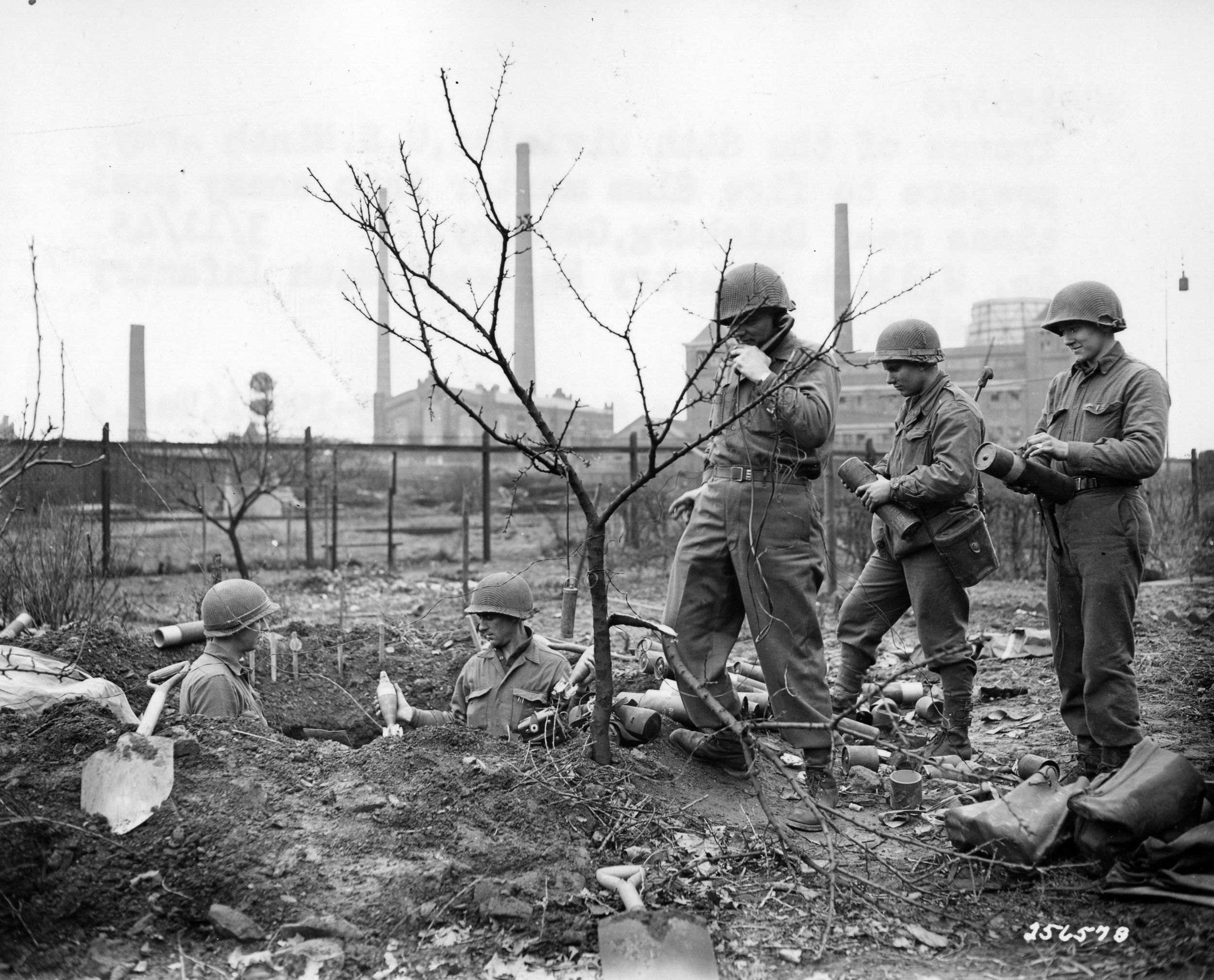
Before Company C jumped off from its position in the woods west of the village, Captain Biggs sent a patrol of four men to reconnoiter. The patrol returned at noon and reported that no Germans had been contacted up to the embankment of the railroad cut.
At 12:50 the company started forward through the trees toward the line of departure near the southwest edge of the town. The 1st Platoon was on the right, 2nd Platoon on the left, and 3rd Platoon following 150 yards to the rear of the 2nd. The dense woods limited visibility to just 15 feet, which caused the 3rd Platoon to lose contact with the leading platoons.
At 1 pm, a German mortar barrage began to fall on the 3rd Platoon. In the confusion, some men headed to the rear rather than in the direction of the village. Others remained in the area under fire to aid the wounded.
The leading platoons continued their advance parallel to the houses on the west side of the main road to just west of the rail cut, where they soon began to receive small-arms and mortar fire. The 1st Platoon leader, 2nd Lieutenant Thomas L. Buchman, led his men in groups of four or five to the houses along the west side of the road in an effort to find protection from the mortars.
The 2nd Platoon, which was advancing to the west of the 1st, was slowed by this fire. As they found little cover on the ground they were crossing, men moved by rushes through the open fields and an orchard. Technical Sergeant Harold Smith, along with Staff Sergeant Nicholas Olah from 3rd Platoon and part of his squad, managed to run and crawl to the first house on the west side of the road.
The 2nd Platoon was still pinned down in the orchard when Captain Biggs sent his runner to an M36 tank destroyer, which had come up and parked along the road with instructions to fire at the steeple of the town church. Captain Biggs had a hunch that a German observer was using the steeple as an observation post. The tank destroyer fired three 90mm rounds at the steeple approximately 1,000 yards to its front. After the third hit, the German mortar fire ceased.
At 2 pm, the two platoons, along with Olah’s 3rd Squad, moved across the railroad cut, one man at a time running down the west embankment, across the tracks, and up the east bank to the cover of several buildings. These men were covered by a light machine gun under Sergeant Robert Turner, who had the weapon set up on the top of the railroad cut behind a hedge that ran parallel with the tracks. Captain Biggs tried to keep his platoons abreast of each other and advancing up the main street by ordering them to occupy the three houses on either side of the road beyond the railway cut.
Due to the German mortar fire and sniper activity, the 1st and 2nd Platoons had become disorganized as some of 1st Platoon was mixed in with members of 2nd Platoon. Both were scrambled with platoons of Company B.
Private First Class James A. Davenport saw Germans in the third house on the east side of the road and said to the group of men he was with, “Hey, there’s Germans over there.”
Sergeant John R. Huyge answered with the obvious, “Well, let’s go get them!” and then proceeded toward the house. He kicked down a thin concrete slab fence that was in his path and ran to the side of the house where Davenport had seen the Germans. Once there, he turned and discovered that he was alone. He ran back to where he had left his squad. Meanwhile, Technical Sergeant John Elek, 2nd Platoon, had come up. Huyge told him, “Davenport says there’s Germans in that house. If someone will help me, we can get ‘em.” About eight men, including Elek and Pfc. Raymond Swanson, followed Huyge back to the house. Swanson approached the doorway and yelled, “Kommen sie aus,” as he aimed his M1 at the door. Two Germans then came running out with their hands in the air.
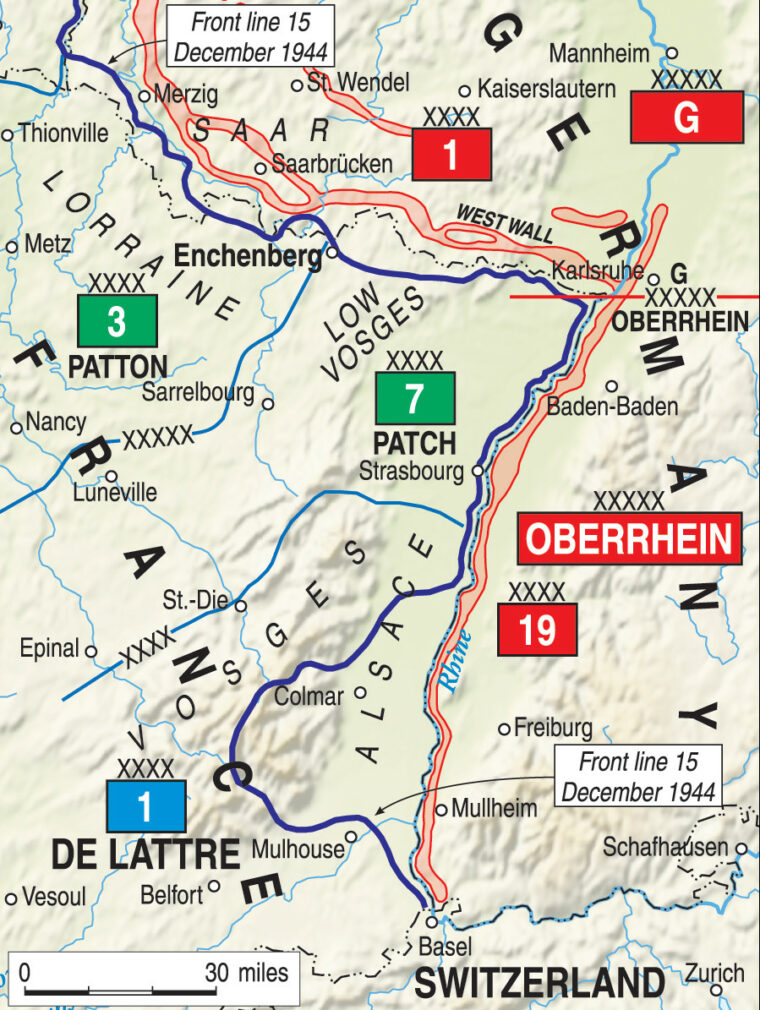
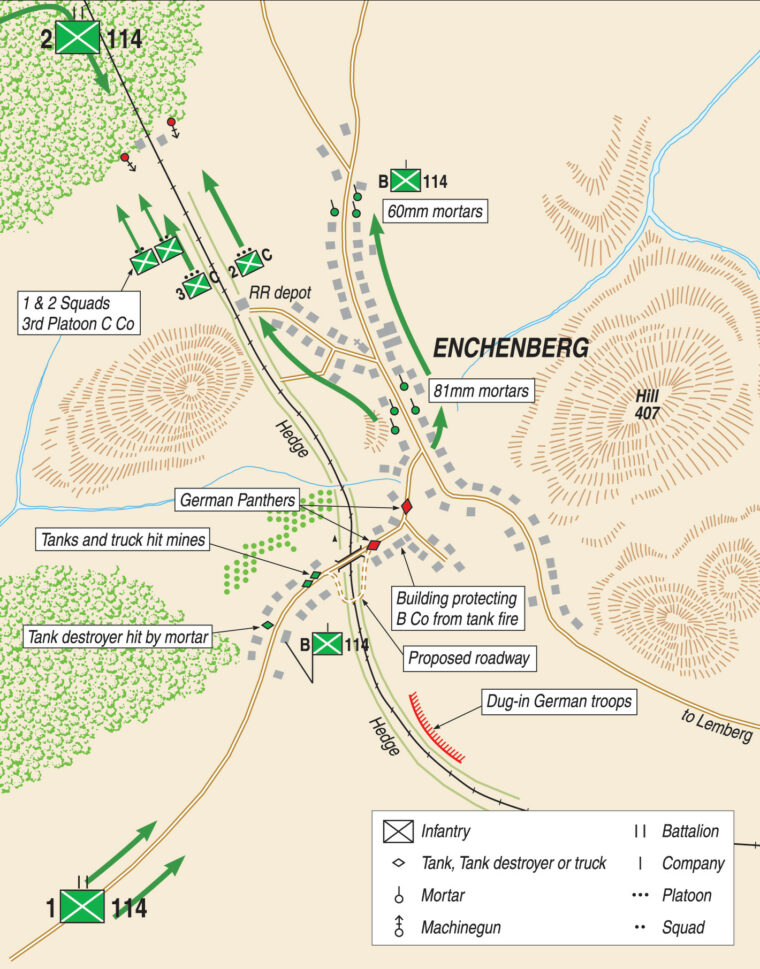
Sergeant Huyge and Pfc. Swanson now ran across the street to join their squad on the west side of the road. While they were crossing, a large-caliber shell whizzed passed them. Sergeant Elek, looking out an attic window from the house on the east side of the road, observed that the fire was coming from a Panther at the first street intersection to the east along the main road. Elek radioed the tank’s position to Captain Biggs, who was in a building to Elek’s rear.
Biggs told Elek to give the information to 1st Lieutenant Michael Szoc, who was in the same building as Biggs. Szoc in turn relayed it to supporting guns. The resulting artillery fire did not hit the Panther but did kill a number of German infantrymen who were behind the vehicle as the shell fragments bounced off the walls of the buildings in the narrow street. The Panther moved up and down the street to avoid being hit by the artillery shells. At the same time, it fired its 75mm gun systematically in the direction of the buildings to its front and both sides of the street where the American troops were located.
Sergeant Elek’s house was hit, forcing him to leave his attic observation post. Once downstairs, Elek called across the street to Buchman, asking to relay the position of the German tank to Szoc by radio. From a hayloft, Buchman was able to observe the Panther, and relayed the information to Szoc. But the tank now opened fire on his position, forcing Buchman to the ground floor where it was not possible to see the threatening Panther any longer.
When Buchman told Captain Biggs over his radio that he could no longer see the Panther, Private Leland A. Goeke, who had borrowed Elek’s radio, began relaying information on the tank’s position to Biggs. Goeke was looking through a three-inch hole that had been broken through a frosted-glass window.
After attempting to knock down a house and barn filled with hay that had blocked its line of fire, the Panther proceeded to a position that was only 25 yards from Goeke, who radioed this information to Szoc. Artillery shells then began to land in the road near the tank, wounding several accompanying German infantrymen.
Another German tank now appeared and came up the road, stopping alongside the first. The GIs of the two companies let loose with bazooka fire at the armored pair. This seemed too much for the Panthers, and so they began to withdraw, firing their machine guns and cannons as they went. German medics, adorned in white aprons with large red crosses, came up to collect the wounded, the Americans holding their fire as they went about their work.
As Company A prepared to come forward, four .30-caliber machines guns, three 60mm mortars, and a squad of riflemen were placed on the company’s left flank on high ground east of the road with good observation on the railroad cut. Scouting patrols, sent out earlier, returned with reports that they had not contacted any Germans up to the banks of the cut.
Company A jumped off at 1 pm. While Company C was moving into position on Company B’s left flank, Company A moved out with the 2nd Platoon leading and 3rd and 1st Platoons following behind it at 100 yards. At 1:15, advancing in platoon column, the company was about 100 yards from the railroad cut when German mortars opened up. At the same time a flat trajectory weapon fired at them from somewhere east of the cut. Private Robert Shoffer was wounded in the neck and shoulders by shell fragments; Private Ralph Husky received leg and stomach wounds; Staff Sergeant Raymond Mautai lost both legs. All three men died while six other wounded survived.
In the meantime, Captain Williams had moved into the second house on the right of the road with the remainder of the 2nd Platoon and yelled to the men bringing up the rear to “move to the cover of the building.” But the men were panicky. First Lieutenant Sol Samazin, executive officer, who had been moving up with the 3rd Platoon, heard the message and relayed it to the troops. Despite these orders several of the GIs remained in the ditches rather than moving up to the houses. Although under fire, Samazin made two trips from the buildings back to the ditches to bring up the stragglers.
By 1:45, Company A was in two buildings on the right of the road as squad and platoon leaders made a hasty reorganization of the units and prepared to continue the advance. At 2:30, Williams crossed the railroad cut and found Company B in buildings on the right side of the street. He then ran across the street to Company C’s positions and spoke to Lieutenant Lawrence P. Meltesen, company executive officer. Meltesen told him, “There’s a tank just around the corner of the road ahead firing 88mm and machine gun.” Then, while under sniper fire, Williams brought Company A across the cut. This took about 10 minutes to accomplish.
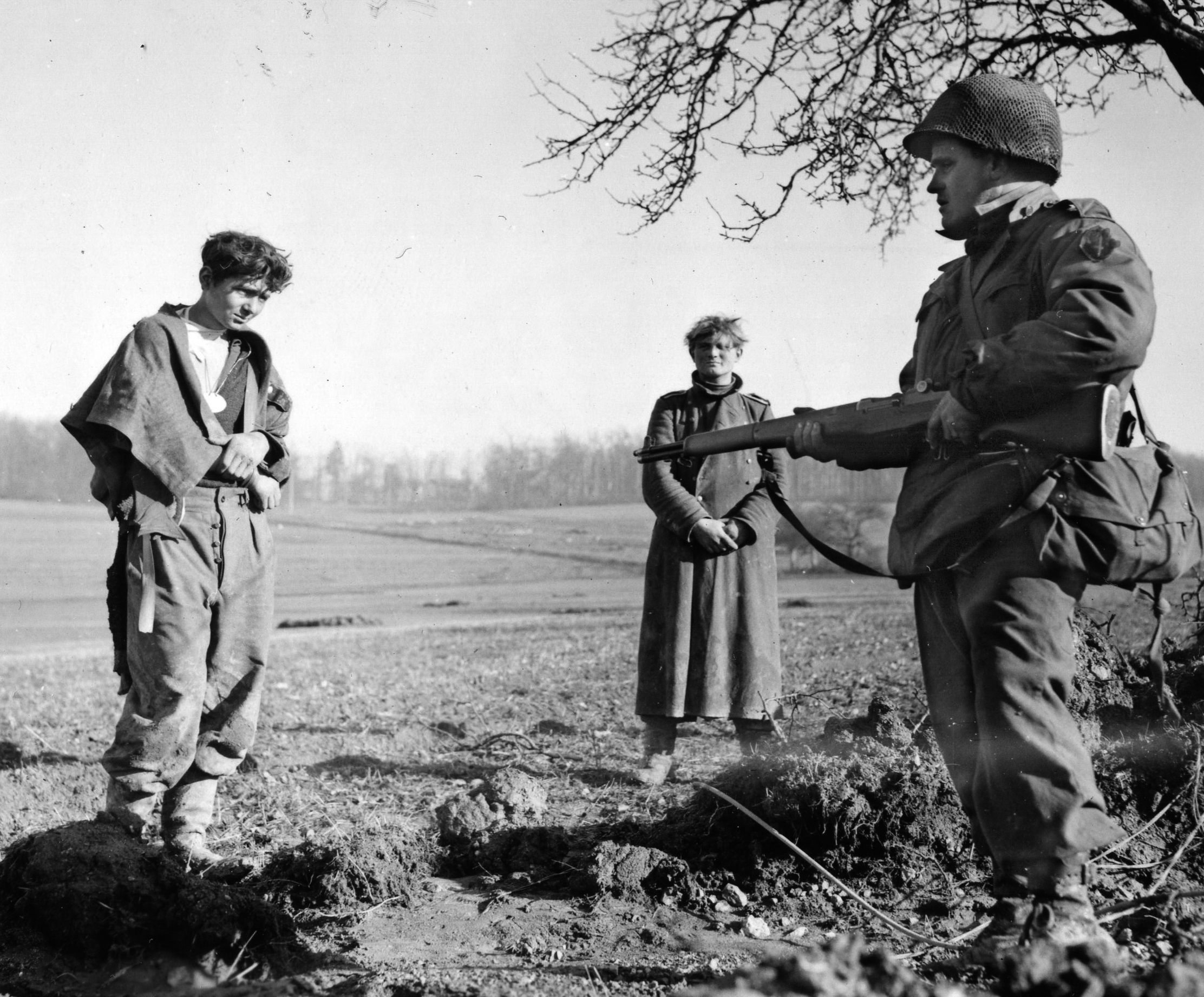
Williams ordered the 2nd and 1st Platoons to clear the houses on a side street that jutted out on the south side of the main road east of the cut, the 2nd Platoon to take the first three houses and the 1st Platoon to take the last three. The 3rd Platoon was to remain in the buildings just occupied by the company along the main road.
The 2nd Platoon’s 16 men moved out first. The 2nd Squad, under Sergeant Russell Karch, dropped off at the first of the three buildings assigned to the platoon. As they approached the house, four civilians came running out of the cellar door waving a white sheet. Behind them followed three Germans with their hands over their heads.
Technical Sergeant Earl Dunnuck moved the 3rd Squad to the rear of the second building, rolling over a mesh fence, while Pfc. Charles Lewis (acting squad leader), Private Stanley Duda, Pfc. Paul J. Stark, Private Paul J. Swank, and Private Ray K. Washam followed in the same manner. They moved cautiously toward the second house. Dunnuck opened the back door, and three civilians came out slowly. Eight Germans followed them and were taken prisoner. Pfc. Stark escorted them to the rear.
Dunnuck entered the house with the rest of the squad and then went to the front of the house with Washam. They found a dead German in the hallway, his head practically shot off. Lying on the front step was a young German with a leg wound, but he seemed to be paying no attention to the events around him because of the intense pain he was suffering. Ignoring him, Dunnuck looked out the open door and saw four or five Germans dug in to his right. Another German was walking toward the third house that the platoon was assigned to take. These men were about 200 yards away.
Dunnuck took careful aim and, so as not to expose himself more than he had to, fired lefthanded, squeezing off three rounds from his M1. The Germans took cover. Dunnuck then left Stark and Washam, who continued to fire at these Germans from the doorway and front window, as he called to Lewis, who had just started upstairs. Lewis and Dunnuck went out the back door. Dunnuck intended to outflank the Germans while Stark and Washam engaged them from the front of the house; however, the backyard was framed in by a wire fence, part of the same one Dunnuck had gone over as they approached the house. To get to the other side of the house, they needed a few moments to cut a hole in the fence.
As Lewis was cutting an opening in the wire mesh, Dunnuck saw a German peeking through a nearby barn door, which the German closed abruptly a moment after Dunnuck spotted him. With a way cleared through the fence, Lewis covered Dunnuck as he ran to the corner of the house. As Dunnuck peered around the corner, he found himself face to face with one of the Germans he had taken the left-handed shots at earlier. The German reacted by tossing a grenade at Dunnuck, but Dunnuck ducked back around the corner of the building and the grenade went off harmlessly. He moved again to the corner of the house and saw the German running around to the front. The German turned the corner at the front of the house and dropped his rifle as he came face-to-face with Washam.
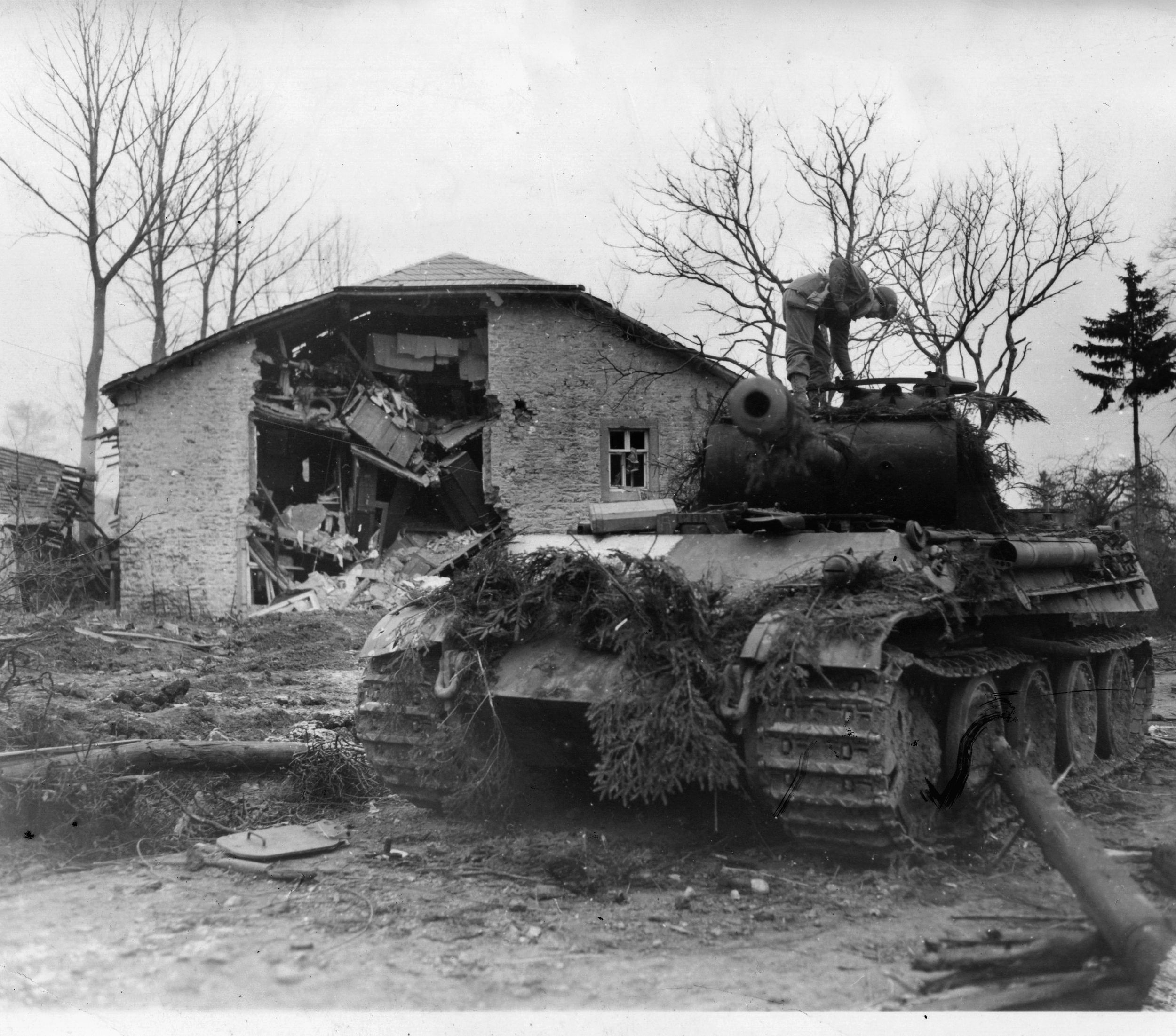
Lewis and Dunnuck now headed for the barn where Dunnuck had seen the German only moments earlier. A grenade was tossed down at them from an upstairs window of the house they had just left. Lewis picked it up and threw it away. It was a dud. Dunnuck then fired a rifle grenade through the open barn door. After it exploded and apparently neutralized any threat from that direction, he tossed a hand grenade into the upstairs window of the house, but his grenade turned out to be a dud also. Stark, who had moved out of the house, then fired a rifle grenade through the window. This one went off.
Captain Williams had come up by now, accompanied by a few men from the 2nd Platoon. As they did, a potato masher hand grenade was tossed out of the upstairs window, causing them to scatter. It went off harmlessly. Williams then sent Staff Sergeant William Ravenscraft, 2nd Platoon squad leader, to get some men from the 1st Platoon so that fire could be directed on all sides of the building. Under cover of this fire Dunnuck tossed his last grenade into the building. After it exploded, the cellar door opened. The GIs held their fire while three civilians ran out and nine German enlisted men and two officers followed them.
While the 2nd Platoon had been engaged, the 19 men of the 1st Platoon had also been busy. Under Staff Sergeant Robert Norton they had moved behind the last three buildings on the right side of the road. The platoon split into two squads. One squad covered the outside of the buildings, while the other searched inside. The 1st Squad found nothing in the first building. The 2nd Squad, under Norton, found some civilians along with four Germans sitting around a fire in the cellar of the second building.
Approaching the last building on the block, Pfc. Phil Yarosites, leading four men of the 1st Squad, saw a German antitank gun set up around the corner of the building with its barrel pointing due west toward the blown bridge. This may have been the flat-trajectory weapon that had fired on Company A as they approached the rail cut earlier.
By 4 pm, Company B had taken all the houses on the south side of the main street up to the first side street. Radio communications had been established with Captain Biggs, who was abreast of Company B on the north side of the street. Captain Williams had worked Company A past the railroad tracks and occupied the group of houses on the side street to Company B’s right. Biggs received orders from battalion to consolidate his position and set up defenses for the night. At dusk an all-around defense was established.
Nearly two hours since its last appearance, the Panther now returned. Supported by five or six infantrymen, it made its way from the center of the village. In its progress it systematically fired at houses on both sides of the street with its machine guns and cannons. Upon reaching the intersection, where the side street split off to the south, it was confronted by a building that blocked its direct line of fire on the buildings where Company B had taken shelter. In an effort to remove this obstacle, the tank fired point-blank at the building with armor-piercing shells. Fortunately for the men of Company B, the building included a barn on the side facing the tank. Hay stored in the barn acted to cushion the cannon fire. Realizing that its efforts were proving futile, the Panther became more daring and closed on the houses where Companies B and C were holed up.
The Panther got within 25 yards of Company B’s position when Pfc. Reynold A. Blubaugh fired a bazooka from a second-story window in one of the buildings on the south side of the street. The rocket exploded without causing any apparent damage to the Panther.
Sergeant Hucke of Company C fired a bazooka round at a distance of 25 yards and at an angle of 85 degrees off the front of the Panther, striking the tank’s bogie wheels and causing one of these small wheels to fly into the air. At the same time, Pfc. Ormand Beltz opened up with a Browning automatic rifle while other GIs fired small arms at the accompanying German infantry.
Sergeant Elek cautiously peered out the window of the building where members of Company C had taken up a position, and he spotted three Germans coming up his side of the street and hugging the buildings for protection. As he reached back to one of the other men who were with him, he whispered, “Give me a grenade.” Someone plopped a grenade into Elek’s outstretched palm. He pulled the pin and threw it in the direction of the three Germans. He repeated, “Give me another.”
Another grenade was dropped into Elek’s hand; he pulled the pin and threw the second grenade in the direction of the Germans before the first had exploded. One of the Germans apparently saw the spark from the burning fuse of the second grenade because there was a yell just before the first grenade went off. In the next instant, the Germans attempted to scatter but were plastered by the second grenade, which had apparently landed closer to them than the first.
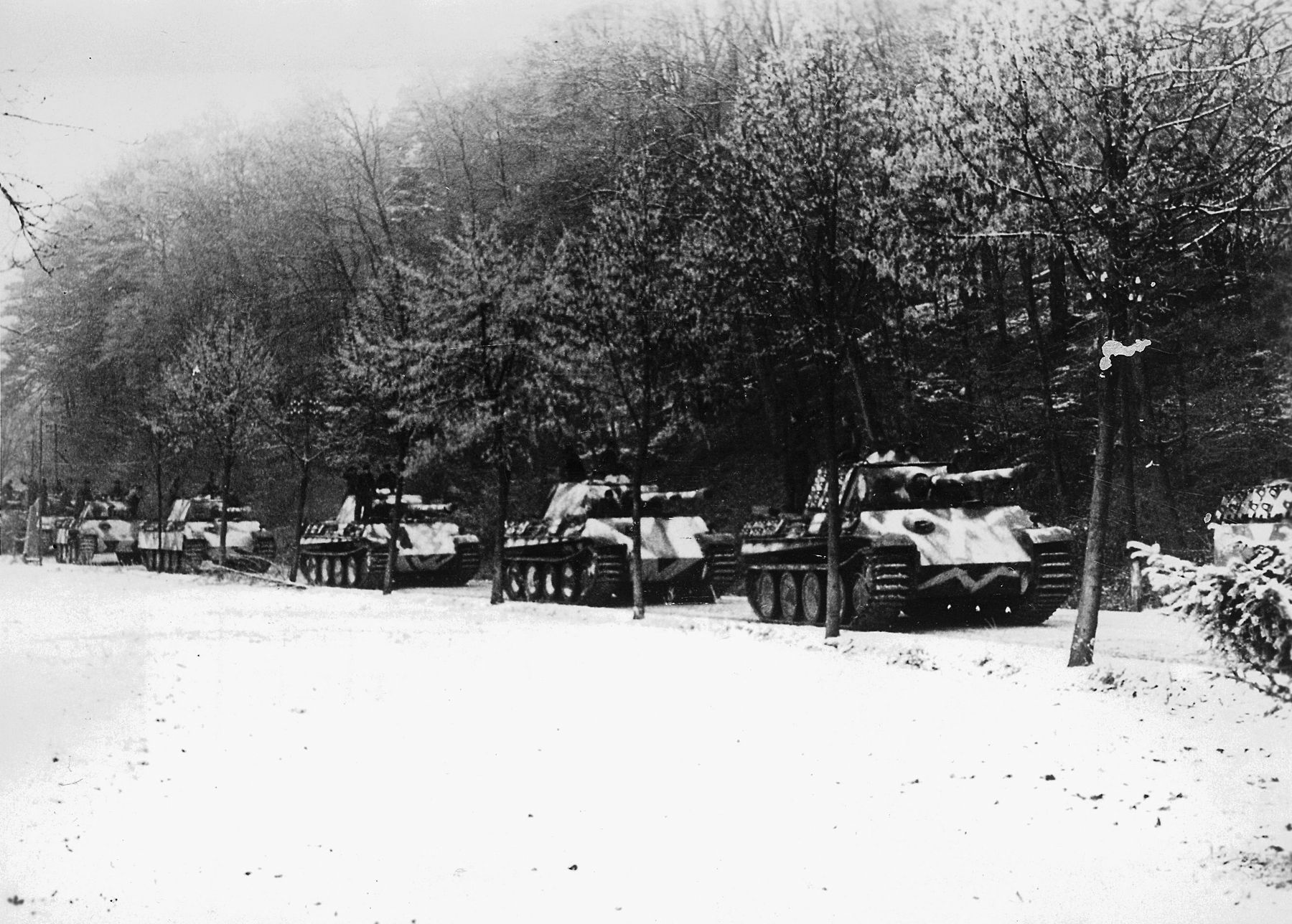
To add to the complications facing the GIs, a second German tank now appeared. It came up the street and parked alongside the first. This was probably the same one that had been involved in the earlier action. The tanks were brought under bazooka fire by members of Company C but received no damage. Both then opened fire on Companies B and C before again withdrawing toward the center of town and out of sight. Once again the Americans held their fire as German medics came forward to collect their wounded.
As the tank action was developing along the main street, Private William I. Ross spotted 15 or 20 Germans advancing through the orchard to the north of Company C’s positions. Some of the group were setting up a machine gun only about 20 yards away from Ross. He reported this information to Captain Biggs, who was in the same house with him. The Captain moved to one of the rear windows to observe for himself. He heard someone twice say, “Hands up!” in broken English, and he noticed 10 or 12 men lined up in a column like prisoners.
Biggs, thinking that someone was leading away a group of prisoners taken earlier, yelled out, “Who the hell is chasing those German prisoners?” When no one answered, he cut loose with his Thompson submachine gun as grenades were thrown by Staff Sergeant Leon Pretti, Staff Sergeant Chapler, and Private Gilbert I. Marez. Some of the Germans ran while others were hit, but none of the Company C men ventured out to see the results of their work.
A short distance away, Pfc. Jack F. Williams of Company C, who was manning one of the company’s light machine guns at the rear of one of the houses, peered through the evening dusk to see up to 10 Germans approaching. He fired 125 rounds before his gun jammed. Leaving the useless weapon, which he had been manning by himself, he ran to the front of the house. There he found other members of Company C. Williams yelled to them, “Come and help me somebody. I can’t hold ‘em much longer!”
Five men followed him through the narrow hallway to the rear of the house and opened fire just in time. The six Americans blazed away with a light machine gun, a captured German Schmeisser machine pistol, a Thompson, and M1 rifles. One of the Germans attempted to throw a potato masher in the window, but it hit the side of the building and exploded harmlessly. Before the attack was repelled, the GIs lobbed 60mm rounds into the orchard, preventing other Germans from coming up to reinforce the assault. The Americans heard moaning all night long but believed that it would be unhealthy to go outside to offer aid.
Half the men of Company C took the opportunity to get some rest while the others remained on alert for the rest of the night. During the night the artillery pounded the northern part of the village.
On orders from the battalion, all companies remained in their positions for the night as bazooka and small-arms ammunition was brought up by carrying parties. Casualties were evacuated; but while they were attempting to cross the railway cut, the carrying parties were fired on by 20mm guns from the north in the rail bed, making it rough going for the GIs.
In an effort to get armored support into the town, plans had been formulated to construct a roadway starting just west of the tracks, south, paralleling the railway on the slope from near the blown bridge down to the tracks, across the track bed, and then back north to the main road east of the bridge.
Mine detectors were brought up to check the proposed roadway, but no mines were discovered. Engineers and a bulldozer from the 63rd Engineer Battalion were brought forward to build the road. At about 10 pm, after working its way about 75 yards along the west bank of the cut, the bulldozer hit an undiscovered mine and was put out of action. At midnight, a tank-dozer was brought up in a further attempt to lay a roadway. It also struck a mine and was disabled. Then German mortar fire landed in the vicinity of the laboring engineers and hit a nearby tank destroyer. The mortar round scored a direct hit in the open-topped crew compartment, setting the tank destroyer on fire and putting it out of action.
A bit earlier, a German soldier carrying a wounded comrade approached Company A’s position. He was stopped by Staff Sergeant Walter Motyka a few yards from the last building along the side street where the antitank gun had been found. The prisoner told Motyka that he had come from Lemberg by half-track as part of a crew of three. The half-track had stopped about 1,000 yards from the bridge, and his NCO had sent him to investigate the town. While doing so he had decided to surrender. He had also found a wounded German soldier in the field and brought him along. The prisoner said that he was Polish and that he had been forced to fight for the Germans. The prisoner also reported that the Germans had 250 to 300 troops in Lemberg, along with three tanks.
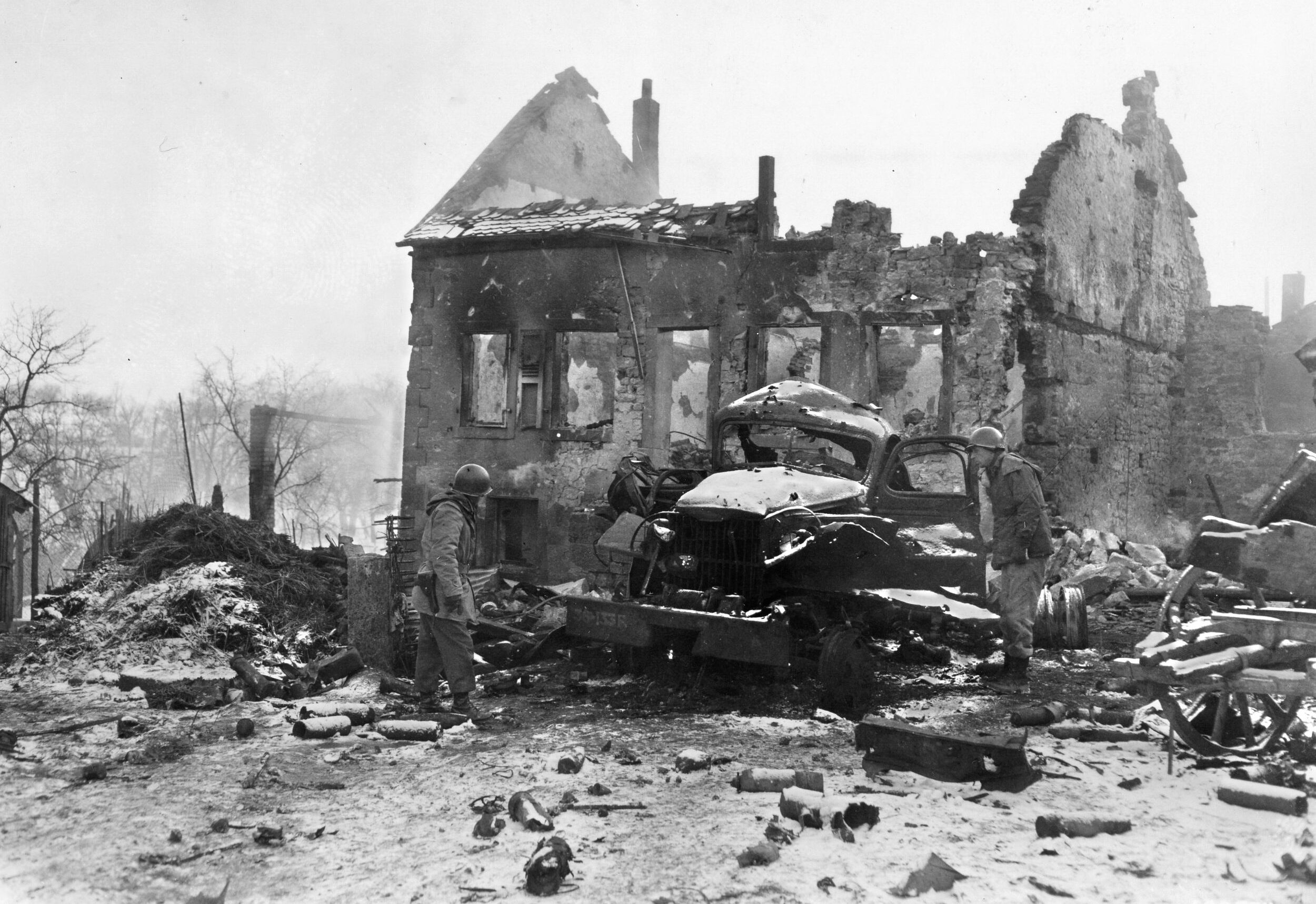
The 2nd Battalion, as it attempted to approach the town from the north, had run into well-defended German positions along its route of advance. When the attack on Enchenberg had jumped off, the battalion had moved out of Montbronn using a trail running north through a ravine west of the town. The battalion had been held up in the ravine by artillery and heavy small-arms fire.
In an effort to bring in tank support on the morning of December 9, a column of eight Shermans of the 749th Tank Battalion headed up the road from Montbronn. As they moved to avoid a damaged truck, the tanks turned off the roadway and moved along the shoulder until the third and fourth tanks in the column both struck mines and were knocked out. Fearing that there might be more mines, the other tanks stopped in place.
There were also reports that the two German Panthers that had been causing so many problems had pulled out of the town during the night. Regiment now issued orders for the 1st Battalion to push through the town, with or without tank support, and “shake hands with the 2nd Battalion coming in from the north.”
The plan was to have the 1st Battalion launch an assault at 8:30 following an artillery barrage. Companies B and C would move to clear the north end of the town. A half hour prior, Company A was to move out and secure the southeast portion of the town.
Beginning at 7:30 and continuing until 8:15, a terrific artillery barrage of 96 guns, including 105s, 155s, and 4.2-inch mortars, was to hit the area north of the middle of Enchenberg to the high ground to the east and west of the town. A no-fire line was drawn through the center of the town.
At 8:30, Company B proceeded north through the town, searching and clearing all the houses on the east side of the main street. The only resistance encountered was some occasional sniper fire. By 10:30, Company B was at the north end of town. Here a defense was set up facing north.
At the same time Company B moved out, Company C also pushed north through the town, cleaning out the houses on the west side of the main street. No opposition was encountered. At the north end of the village, Company C drew up alongside Company B and set up defenses. That evening Captain Biggs’s Company C made contact with 2nd Battalion north of the town along the railway.
By the morning of December 10, the 63rd Engineers had installed a bridge over the railway cut. The 114th Infantry would continue to push toward the German frontier until December 31, when it would come under assault by SS troops during a German offensive called Operation Nordwind.
In their fight for Enchenberg, the GIs of the 1st Battalion showed that they were capable of taking on German Panthers without the support of tanks or tank destroyers. The Germans, however, managed to delay the 114th for three days while using little in the way of resources, buying time to prepare defenses closer to the German frontier.
Author Allyn Vannoy has written extensively on a variety of topics related to World War II. He resides in Hillsboro, Oregon.
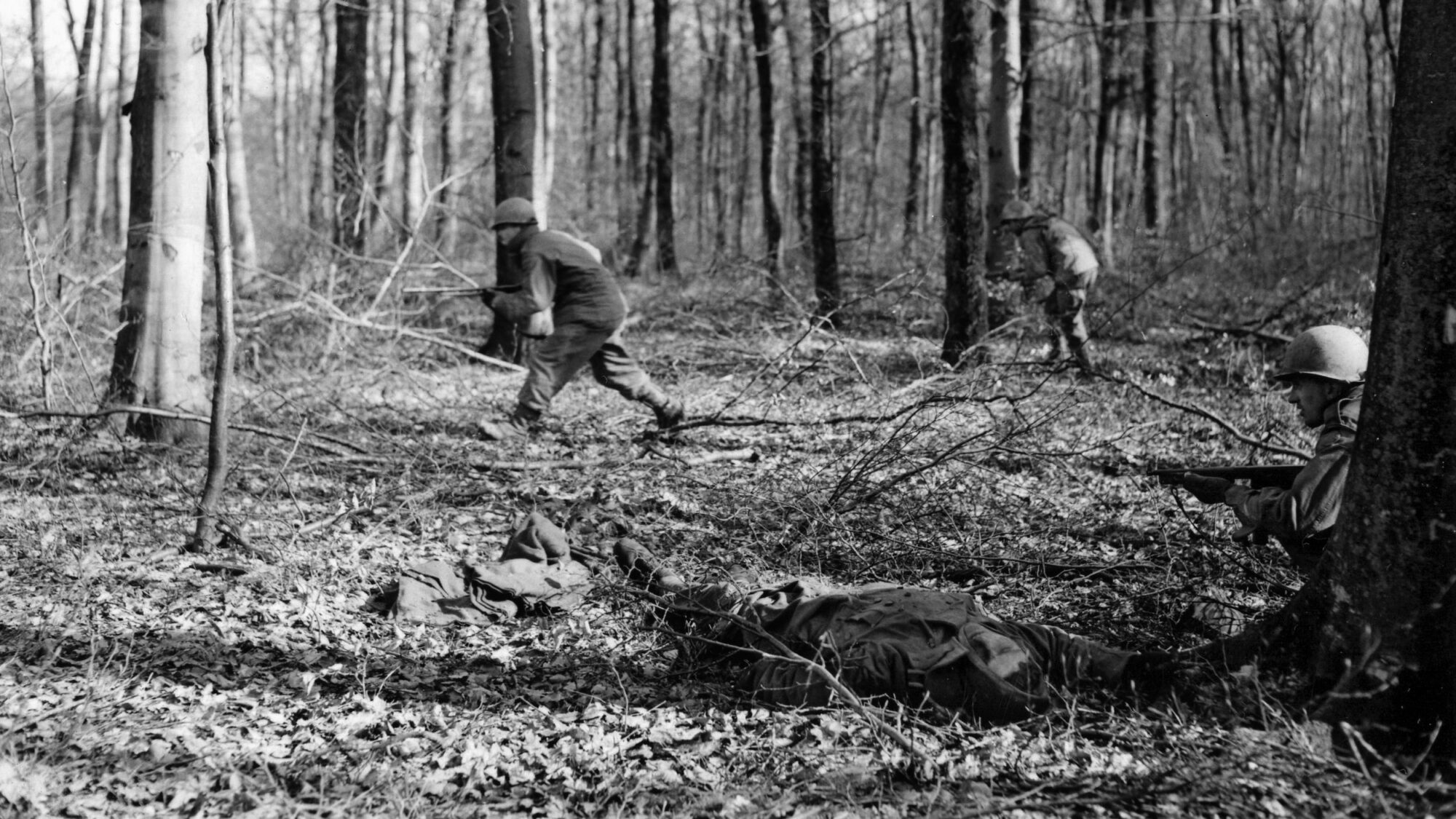
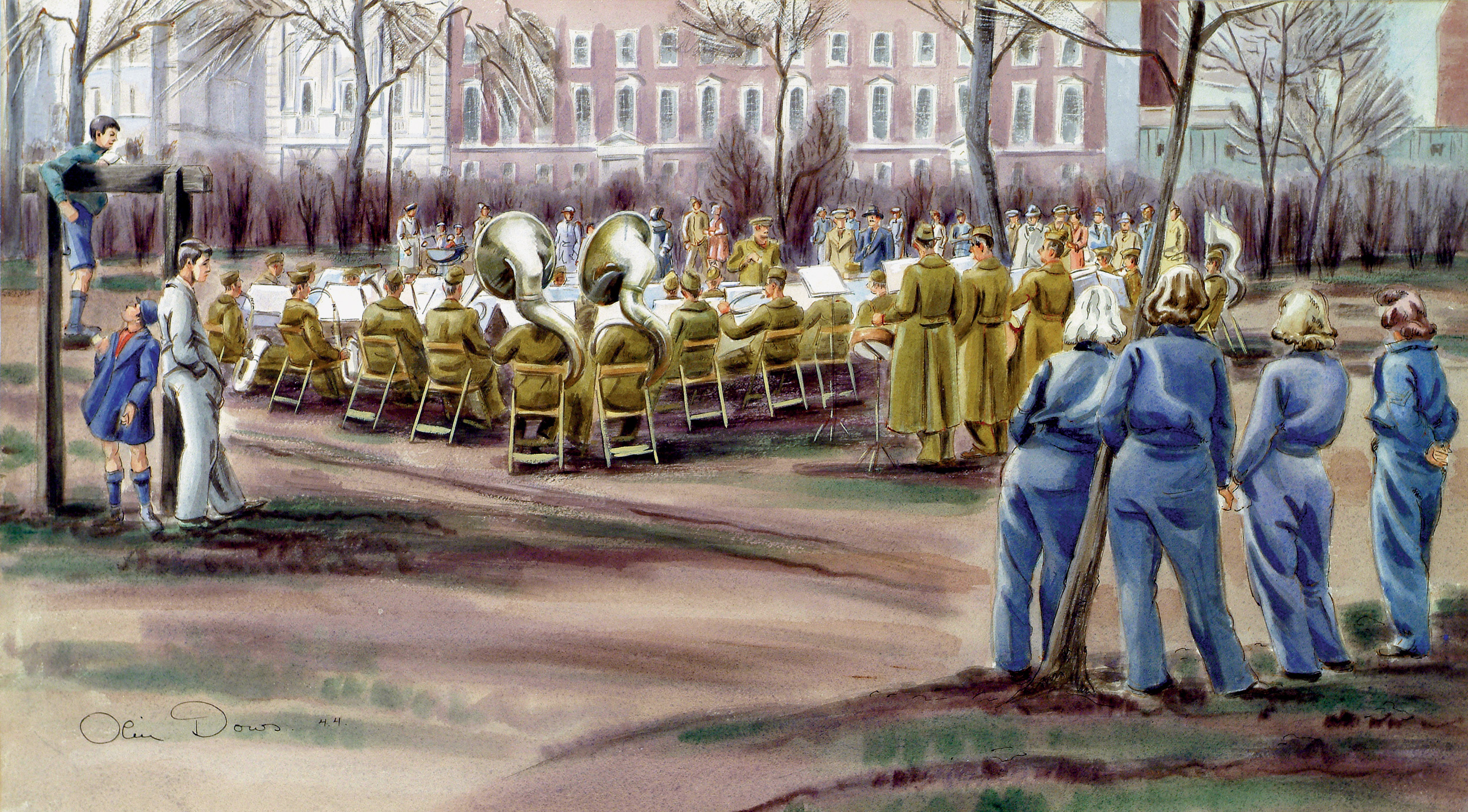
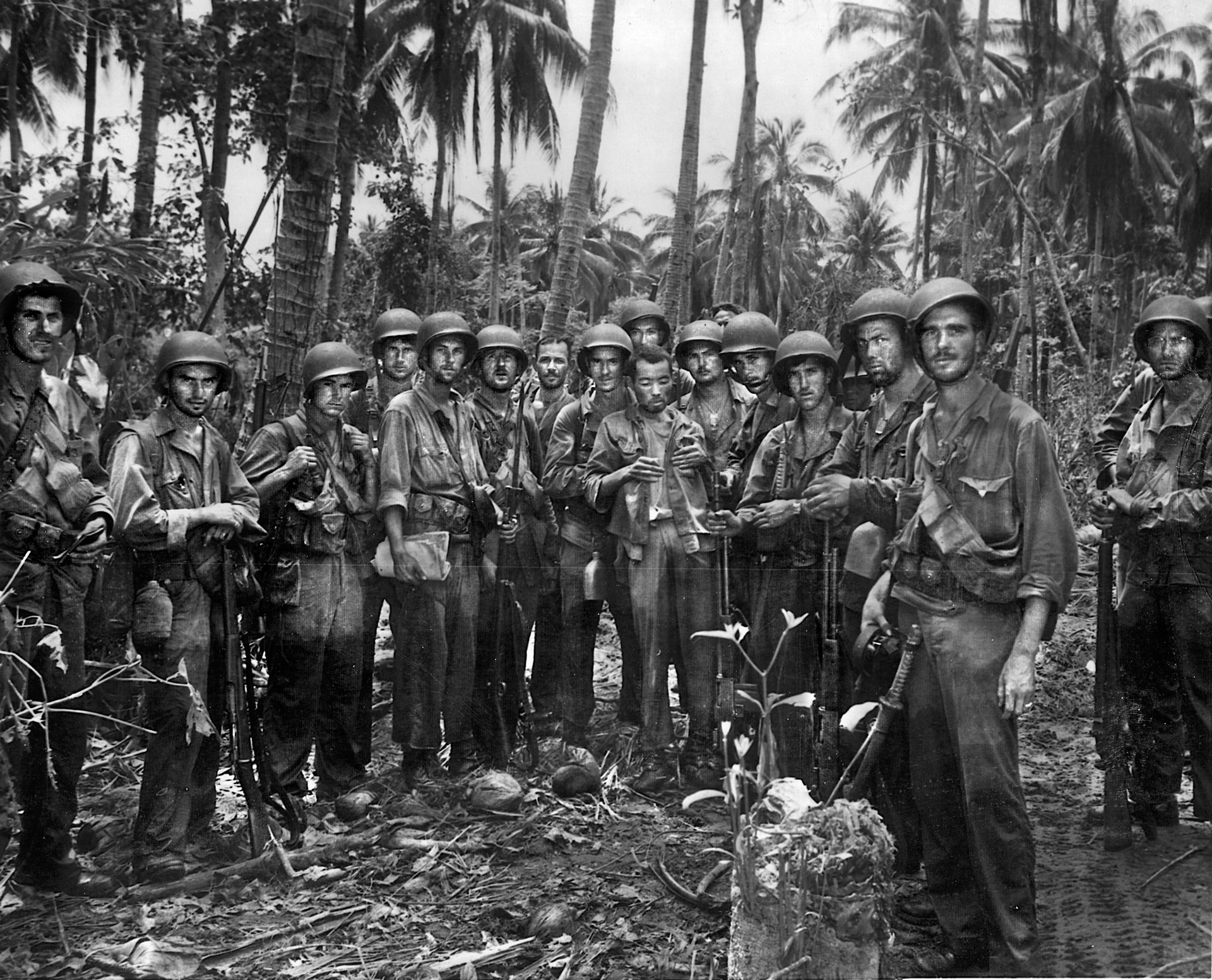
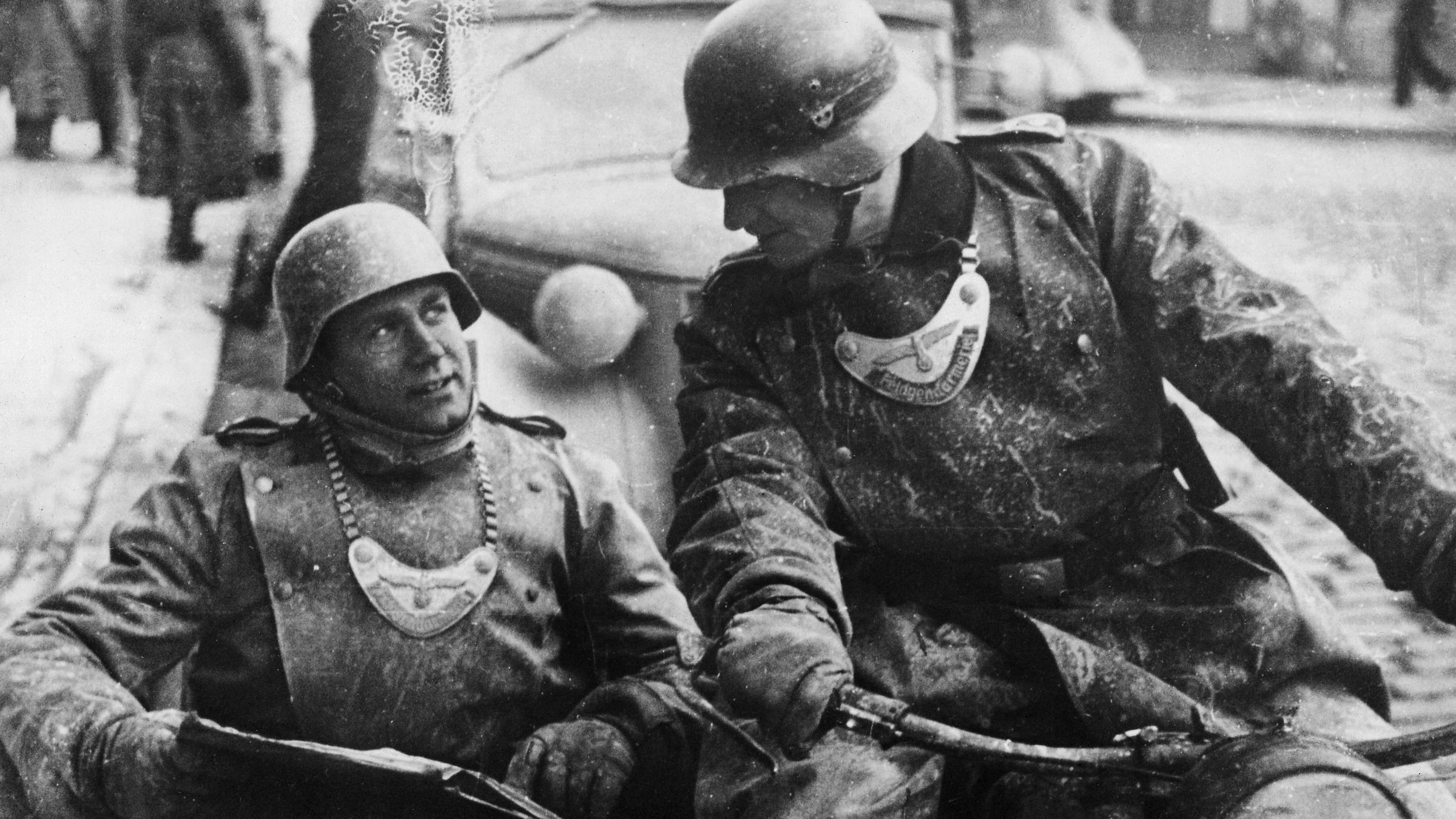
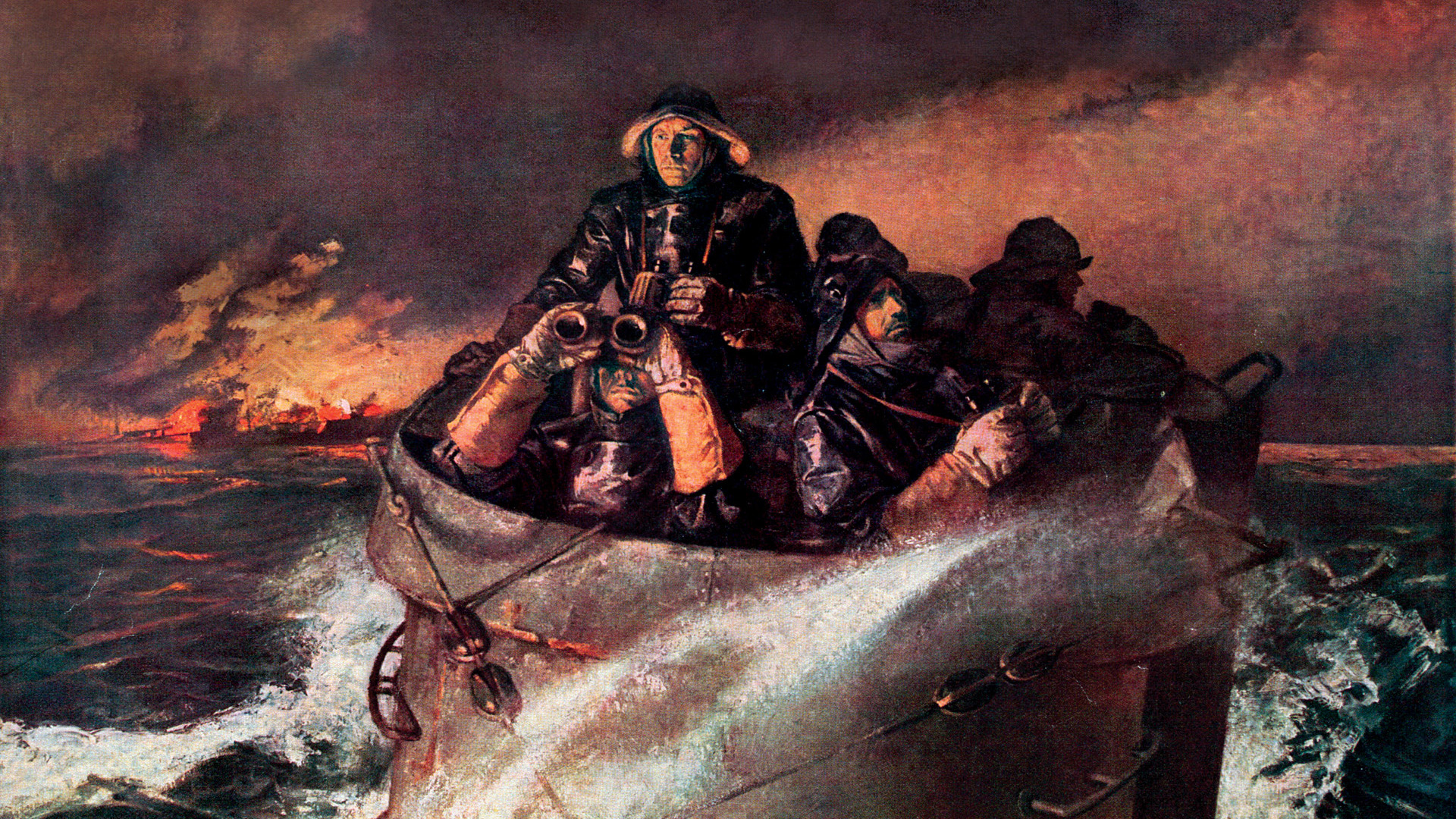
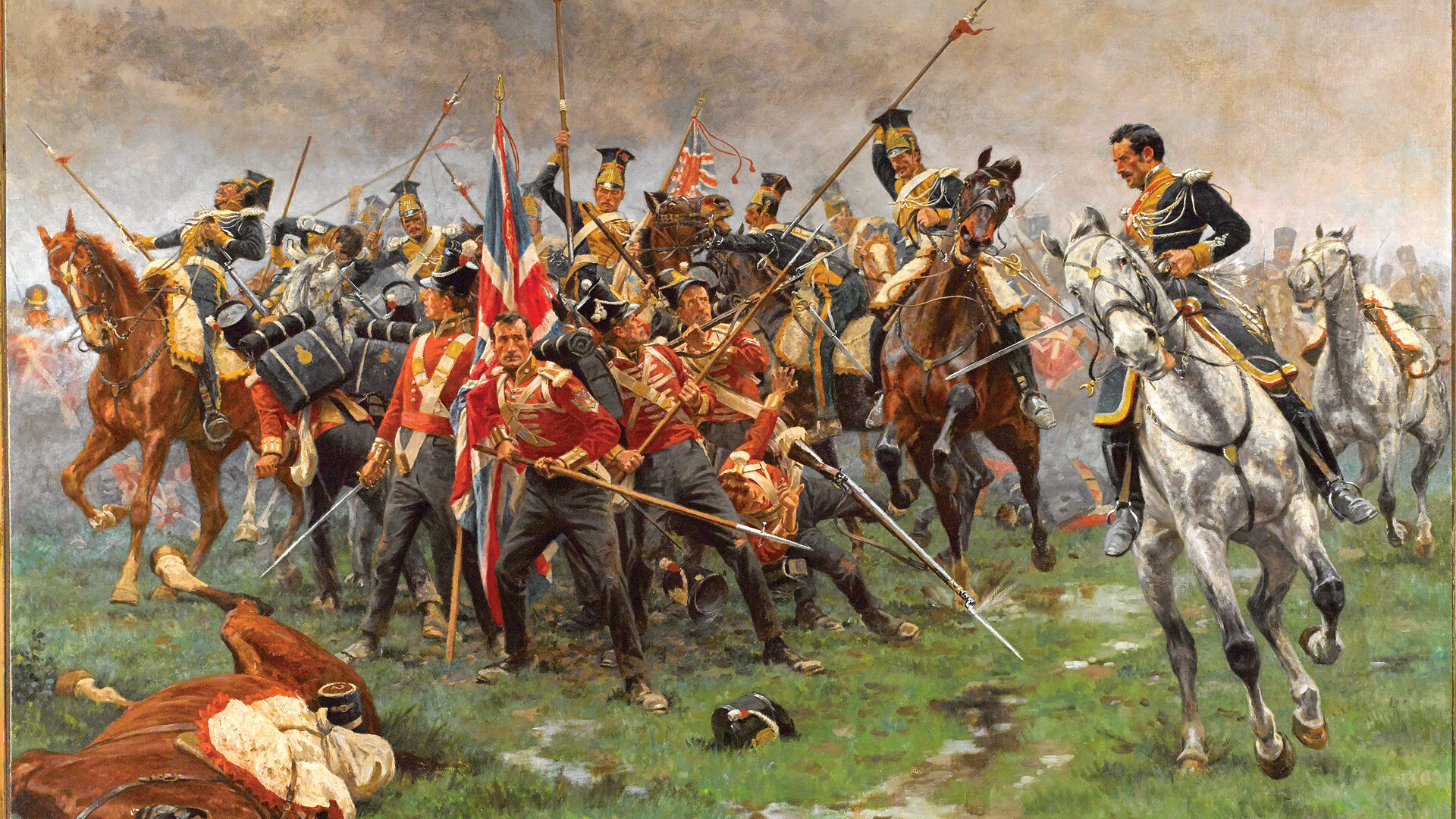
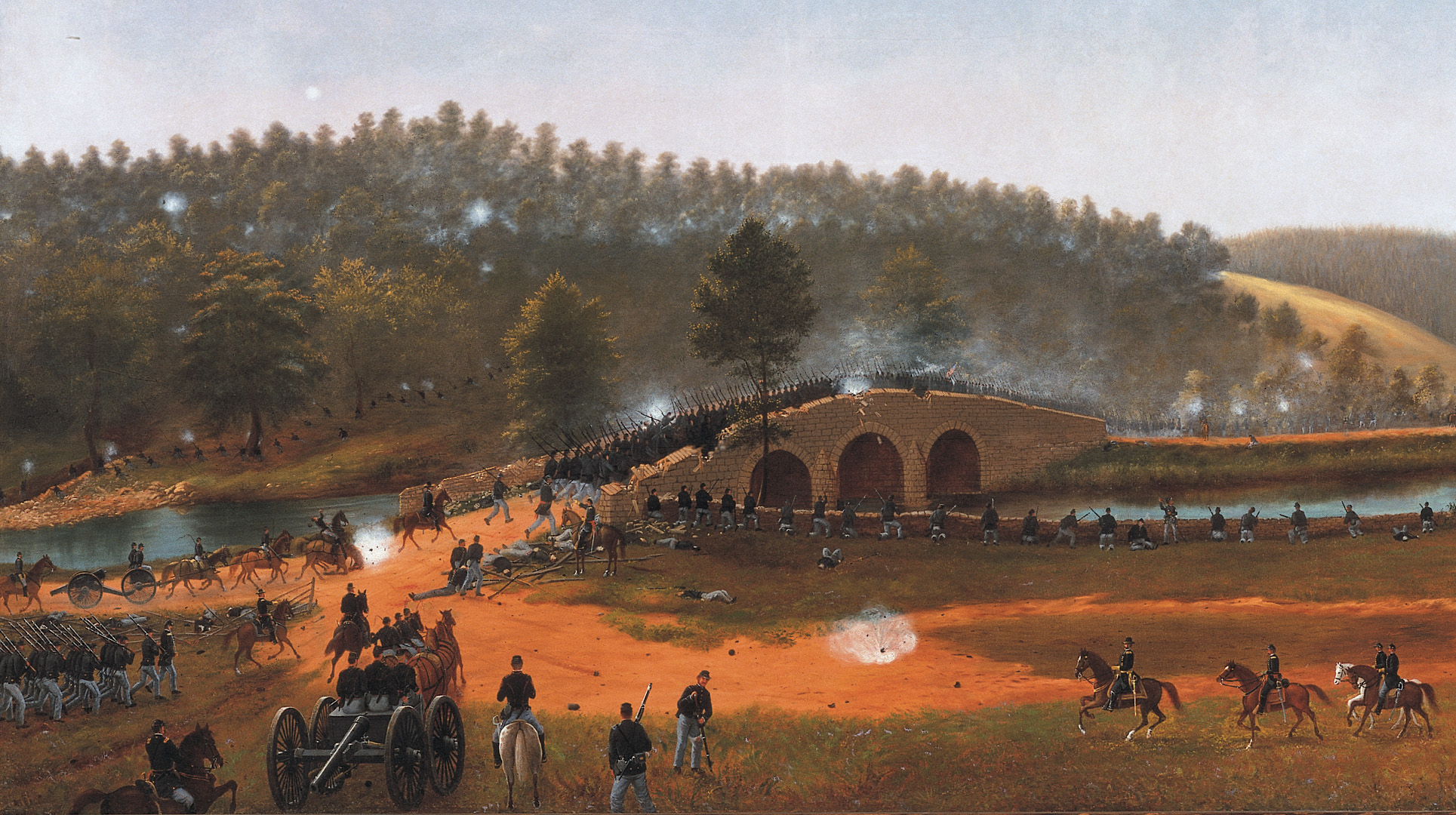
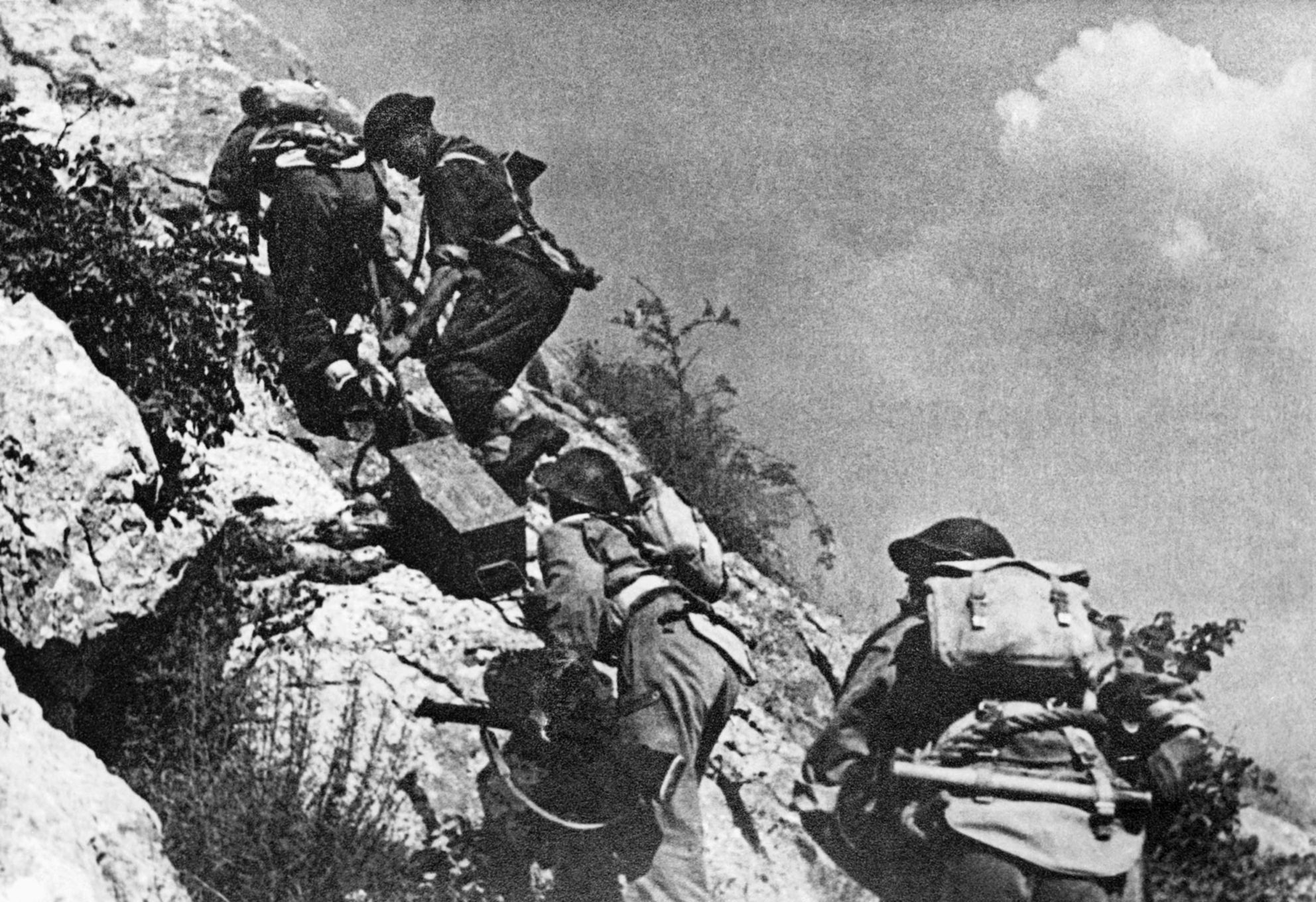
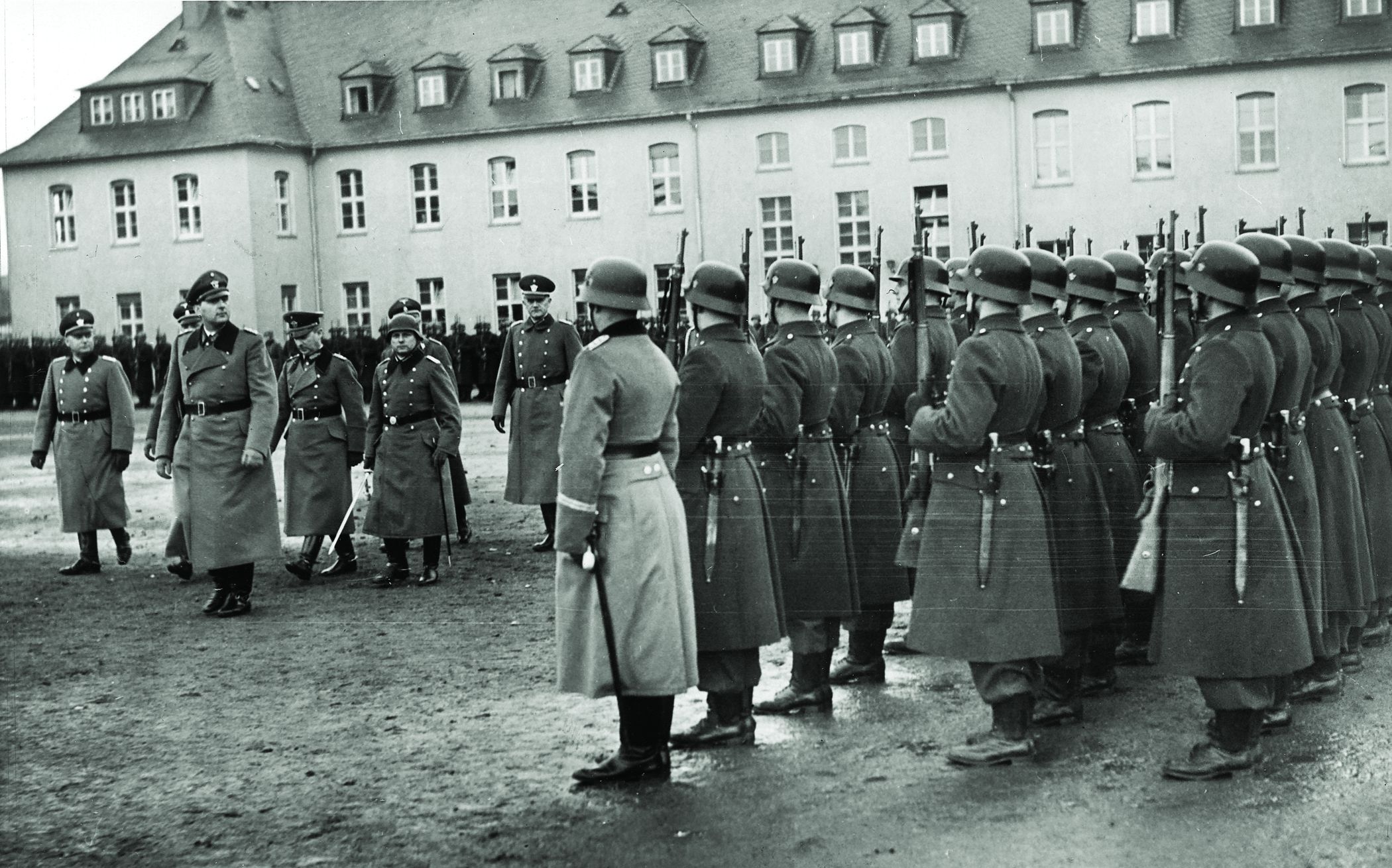
Join The Conversation
Comments
View All Comments